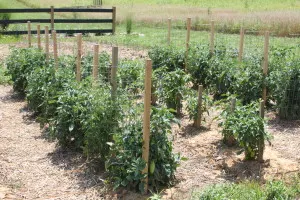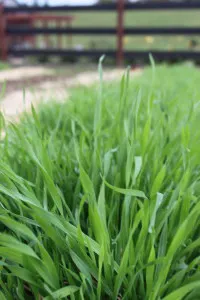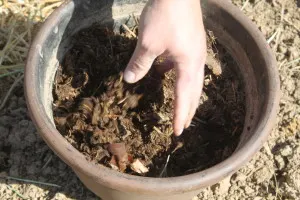So the garden is planted – and now your thoughts woefully turn to the multitude of hours you will need to spend weeding and watering your plants until harvest time. Don’t despair – it doesn’t have to be that way – especially if you use the power of mulch in your garden this year!
Mulch is truly a lifesaver and a gardener’s best friend. When used properly – it can save hours of back-breaking work spent weeding, watering and maintaining a beautiful garden. A simple two-inch layer about 8 to 10 inches around each plant can go a long way to keeping your plants healthy. And when used in your walking rows – mulch can help eliminate the need for time-consuming repetitive row-tilling to keep weeds at bay.
Mulch performs 4 important and valuable functions in the garden: (1) It insulates the soil , (2) It helps to retain moisture, (3) It suppresses weeds, and (4) It enhances your soil as it breaks down.

Tomatoes require a lot of moisture – and a healthy mulching around each plant keeps the root zone from drying out.
As an insulator – mulch is extremely helpful in regulating soil temperatures from wild fluctuations. It keeps the hot summer sun from heating up the soil too much, and helps that same soil from losing too much heat through cool nights. That constant temperature is a key to strong and healthy plant growth.
Mulch is also perfect for helping to retain moisture in and around your plant’s root zone – keeping them from drying out in between rain or watering.
As a weed suppressor – mulch is the king. A healthy 2″ layer of mulch around your plants eliminates weed seeds from blowing in and taking hold – and it also helps keep those that may already be in your soil from germinating. All of this results in less weeding for you!
And maybe it’s best quality is that of soil enhancer. As mulch breaks down – it slowly adds organic matter to your garden, and over time will improve the structure and health of your soil.
Great Choices For Garden Mulch:
Grass clippings, straw, shredded leaves, and compost are all excellent choices for mulching around plants. Compost is our personal favorite – acting not only as a mulch, but as a slow release natural fertilize to the roots below each and every time it rains or we water.
Grass : Grass clippings are an excellent mulch for garden plants. Green clippings are full of nutrients – including nitrogen, which plants need to grow strong. Dry grass works as well – and still adds nutritional value to your soil as it breaks down. Both help retain soil moisture and suppress weeds. One thing to consider when using grass clippings is their origin. If you use fertilizers, pesticides or weed killers on your lawn – you are going to pass those right on to your garden plants as well. So, it is best to only use grass clippings that come from untreated lawns.
Compost : Compost is my single favorite mulch to use around plants. Not only does it have great structure – it also of course adds valuable nutrients to your soil and plants as it breaks down. We use it in all of our planting holes – and then as a 2″ thick layer of mulch about 8″ around the base of each plant.
Shredded Leaves : Leaves are the perfect garden mulch – especially because you can usually find them in abundance in the fall for free! We shred ours with the lawnmower and use them as mulch in the garden around both plants and in the walkways.
Straw : Straw is a great all-purpose mulch. We use it in our walking rows to help suppress weeds. It also an excellent moisture retaining material when used around plants.
Wood Chips : Wood chips and shavings can also be a great mulch to use for your walkways in garden. They are great for suppressing weeds – and can usually be obtained for minimal cost or even free from local tree-trimming companies or sawmills. For more info, you can contact local sawmills, or quality tree experts such as qualified arborists in Converse.
I do not use them around the plants simply because of the coarseness and because it takes them too long to break down.
One to Avoid – Hay. Unlike straw which is made up of the waste portion of a field cutting – hay is made up of the entire portion of grass – including all of the seed heads that come with it. Using hay as a mulch can result in a mass of weeds and leave you with a far greater problem than you had before mulching in the first place.
So get mulching in that garden – and save yourself some watering and weeding all summer long!
If you would like to receive our DIY & Gardening Tips every Tuesday – be sure to sign up to follow the blog via email in the right hand column, “like” us on Facebook, or follow us on Twitter.
Happy Gardening! Jim and Mary


